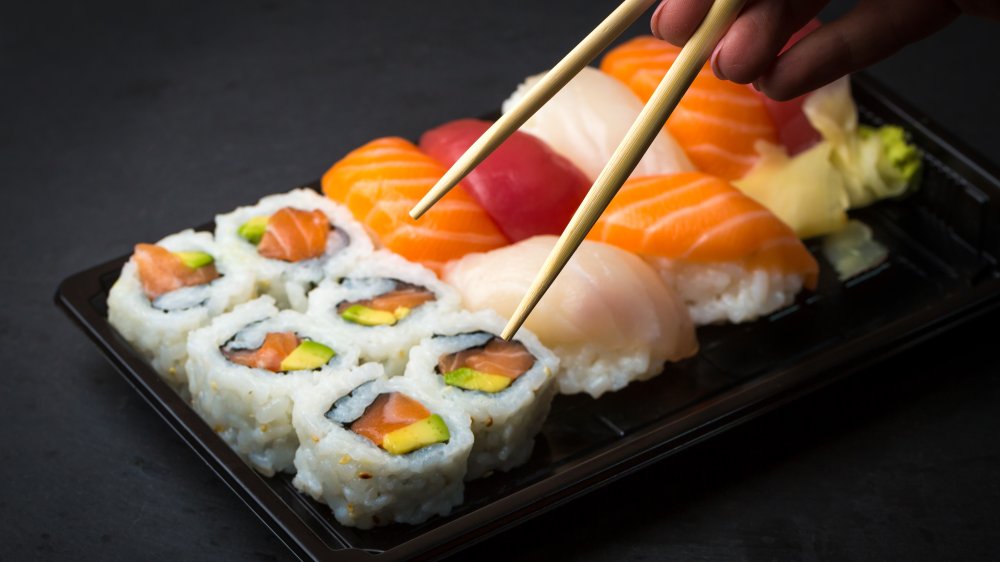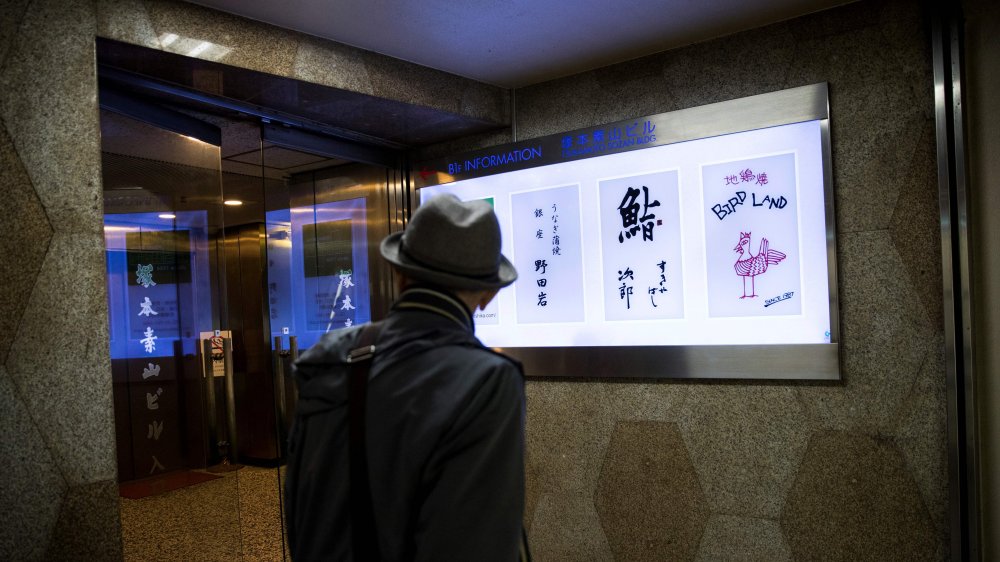The Real Difference Between Cheap And Expensive Sushi
Sushi as we know it today began as street food in a city we now know as Tokyo. The year was 1824, and the market stall owner, Yohei Hanaya, made a name for himself turning mounds of vinegared rice into a little ball before topping it with a slice of fish, and serving this delicious concoction to his hungry customers (via The Guardian).
Thanks to the birth of mass production and refrigeration, we now have access to mass-produced sushi Hanaya might not be so impressed with. Trevor Corson, author of The Story of Sushi, tells Thrillist that today, it's easy to encounter cheap sushi, which is cold where it should be room temperature or slightly warm. Its rice may be dry, thanks to time spent in refrigeration. Because the rice that forms the base of store-bought sushi is premixed, it may contain more vinegar and sugar than it needs.
Rice isn't the only problem with cheap sushi. Refrigerated raw fish found in mass produced sushi is not as flavorful as the fresher fish used in an expensive restaurant. Mass-market sushi chefs don't have the relationships with suppliers high-end sushi chefs do, and as a result, the fish is not as high quality.
Why expensive sushi is worth the money
Supermarket sushi couldn't be more different from the offerings on the omakase (tasting menu) at Sukiyabashi Jiro (which costs 40,000 yen, or about $375). This is the Tokyo bar immortalized in the 2011 documentary, Jiro Dreams of Sushi, and which recently lost its three Michelin stars, because it stopped taking reservations.
Sukiyabashi Jiro advises visitors to arrive on time, because the sushi rice that forms the base of the restaurant's iconic Edo-style sushi is prepared to order, with fresh seafood that goes hand-in-hand with the rice. "Please eat the sushi soon after it is placed on the plate in front of you. Its flavors are at their most exquisite when the sushi has just been prepared," Jiro also tells diners.
The meal at Jiro consists of just 20 pieces of sushi that are served in an order determined by the chef. Don't expect soy sauce at what is arguably Tokyo's most expensive sushi bar — all the pieces that need it have already had the nikiri soy sauce brushed on. Meanwhile, $375 may be a lot for a 20-piece sushi meal, but you can enjoy a good sushi meal for much less closer to home. Corson advises you to skip the cheap sushi all together, and save money for the real thing — because the quality of the sushi and the enjoyable dining experience that comes with it, will be well worth the money (via Thrillist).

